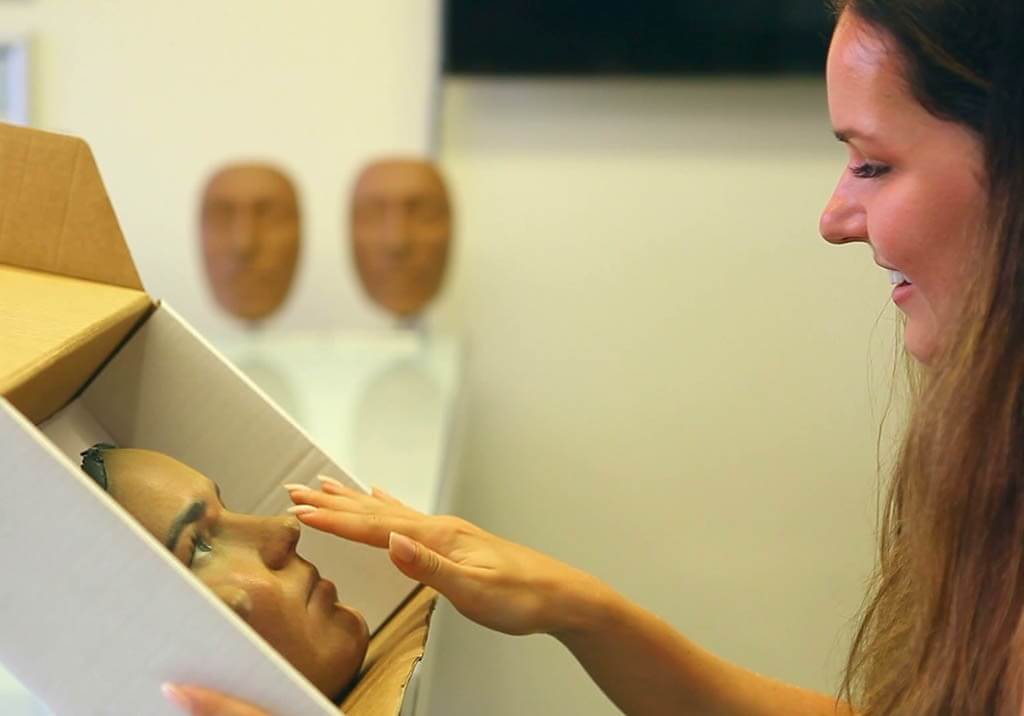How the use of 3D scanners revolutionizes medicine
After the triumphant success of 3D printers, 3D scanners are now becoming popular in more and more branches. Especially in industry, science, art and health care, the new technology continues to prevail. What 3D scanners are and how this technique improves the medicine and especially the life quality of some patients, you will learn in this article.
3D printers are becoming increasingly popular. Whether in the mechanical engineering sector, in the packaging industry or in medical technology, the use of 3D-printers makes everyday work easier for many industries. But hardly anyone has heard of 3D scanners. With this new technology, a wide range of objects can be scanned within hours or even minutes, which has formerly taken days or even weeks.
3D scanners can be used to capture almost any object quickly and with astounding accuracy. This method allows medical technology to produce customized prostheses easily and quickly – from the new ear to a complete new face. The 3D scanner creates a high-resolution 3D model of an object in real-time with up to 16 images per second. After completing the 3D model, the cosmetic prosthesis is created by using a 3D printer.
Creation of a 3D model in the run-up to cosmetic surgery
The new technology offers tremendous advantages, especially in the field of facial surgery. This way, patients can receive a natural 3D model of their “new” face ahead of cosmetic surgeries. What sounds like a science fiction film has become reality – at least with Dr. Avşar, who founded the AVSAR clinic for plastic surgery in Istanbul. As the first plastic surgeon in the world, he reveals individual facial masks to his patients using a 3D hand-held scanner that anticipates the outcome of the procedure.
With the 3D model, the patients can see – before the operation takes place – what the result of the operation will look like. This helps them to assess the possibilities and limitations of an intervention in a realistic manner. The doctors also benefit from the mask, which serves as a three-dimensional reference. Before the 3D hand scanner, Dr. Avşar designed the masks himself – by hand. A tedious work that took a lot of valuable time. In addition, the handmade models often lack important details such as color and texture.
Reconstruction of an ear thanks to 3D scanner
Another example from medicine: Thanks to the new 3D scanner, medicine can now more easily help patients suffering from microtia, a congenital malformation of the elastic cartilage of the ear. In some cases, the auricle is so small that it does not appear to be present at all.
The result of this malformation: hearing loss. With the 3D scan of the ear, Ken Stewart, the head of the local “Ear Reconstruction Service of Scotland” in Edinburgh, can correct ear defects using a 3D template. For this purpose, both ears are usually scanned – the healthy and the deformed one.
If, on the other hand, a bilateral microtia is present (both ears are affected), the ear of a family member must be scanned. The 3D scanner first captures the auricle and then engages deep into the auditory canal to collect further visual information. The images are then merged into the computer to create a digital model of the ear.
After approximately three hours of printing time, the imitated ears are removed from the 3D printer, cleaned and hardened with UV light. “The model is finally sterilized and delivered directly as a template for the simulation into the operating room,” explains Ken Stewart. With the help of advanced 3D visualization technology, the surgeon now has a very different level of precision.
The animal world also benefits from the new 3D technology
However, not only do people benefit from 3D scanners – even animals get help. For example, a Costa Rican tukan, who had been mistreated by teenagers and lost parts of his upper beak, got a new beak using 3D scanners and printers.
By the loss of his beak, the bird could scarcely take up food and had to be fed – without a prosthesis he would have starved sooner or later. With his new beak, he can now go back to enjoying his life.
Source of title picture: messerPR
[plista]


